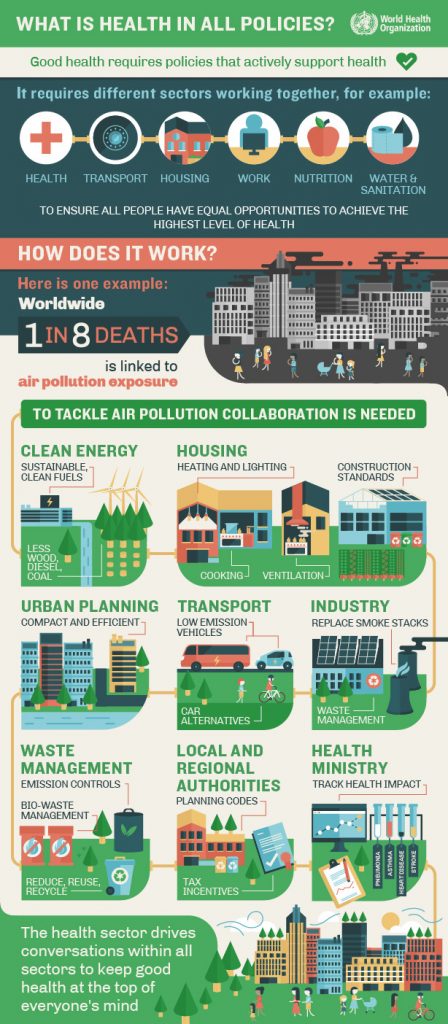Policy Makers
All the technological and scientific developments done in PULSE are aimed to support the adoption and spread of Heath-in-All-Policies (HiAP) across cities, thus equipping policy makers with the evidence-based information they need to develop new integrated policy measures addressing local needs and concerns. The decision makers can have more clear spatial references linked to environmental and health data to better analyse the situation in the defined areas (e.g., neighbourhoods), in order to generate spatially targeted health-oriented interventions which might require a whole-of-government approach (e.g. involving the city council departments/agencies of education, mobility, social services, or others).
HiAP was defined in the context of the 8th Global Conference on Health Promotion as “an approach to public policies across sectors that systematically takes into account the health implications of decisions, seeks synergies, and avoids harmful health impacts in order to improve population health and health equity. It improves accountability of policymakers for health impacts at all levels of policy-making. It includes an emphasis on the consequences of public policies on health systems, determinants of health and well-being” (The Helsinki Statement on Health in All Policies, 2013).
To this purpose PULSE team has carried out an analysis of existing models to establish the level of maturity of HiAP in cities and has developed an improved version of the HiAP Maturity Model (MM-HiAP).
The PULSE Maturity Scale-HiAP (PMS-HiAP) is a tool for the assessment of HiAP in the cities, which is being applied to the PULSE testbed cities and available for any interested city beyond the PULSE consortium.
Using this tool, rankings could be generated to understand the development of HiAP policy-making across the domains of health, environment, transport and planning.

